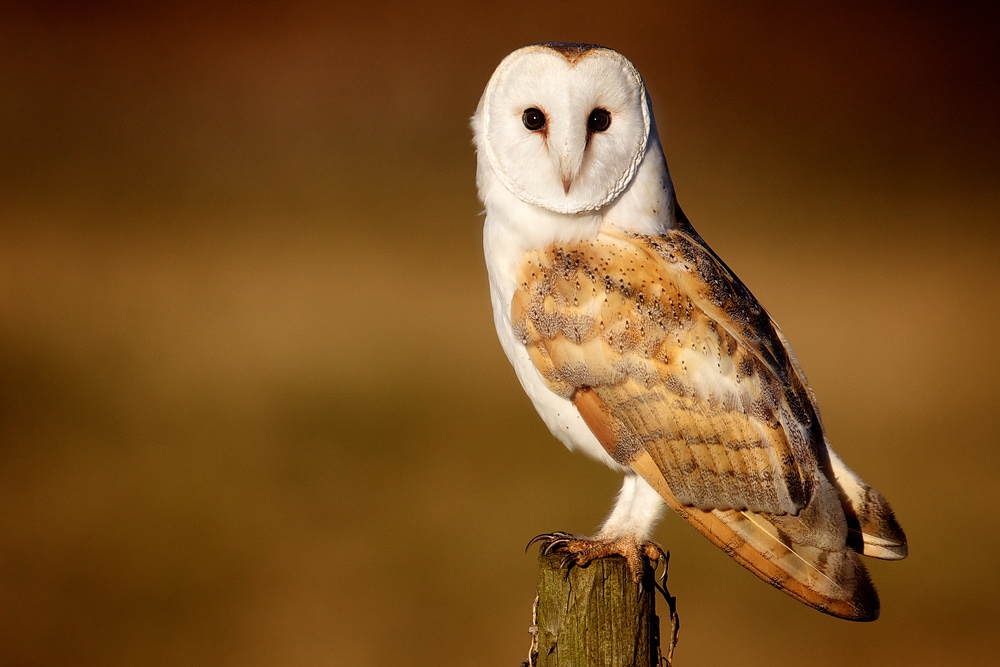Outforia Quicktake: Key Takeaways
- Barn owls are found globally, except in polar and desert areas, with 28 subspecies in existence.
- Distinct features include heart-shaped faces, white feathers, and screeching sounds instead of hooting.
- They primarily consume rodents, have a higher metabolic rate than other owls, and play an essential ecological role in controlling rodent populations.
- Barn owls have a lifespan of about four years, mate for life, and usually breed once per year.
- Their habitat includes farmlands, grasslands, and coastal areas, often coexisting with humans.
The barn owl reigns as one of the most iconic owls across the globe. Its captivating heart-shaped visage, pristine white plumage, and enigmatic countenance set it apart from its avian counterparts. Remarkably, this ethereal creature graces every corner of the Earth, with the exception of polar and desert regions.
Contrary to popular belief, the barn owl forgoes the quintessential hoot associated with its species. Instead, it emits an spine-chilling screech, powerful enough to send shivers down one’s spine. Demonstrating astonishing versatility, these owls masterfully mimic the sounds of their prey and boast a diverse repertoire of calls.
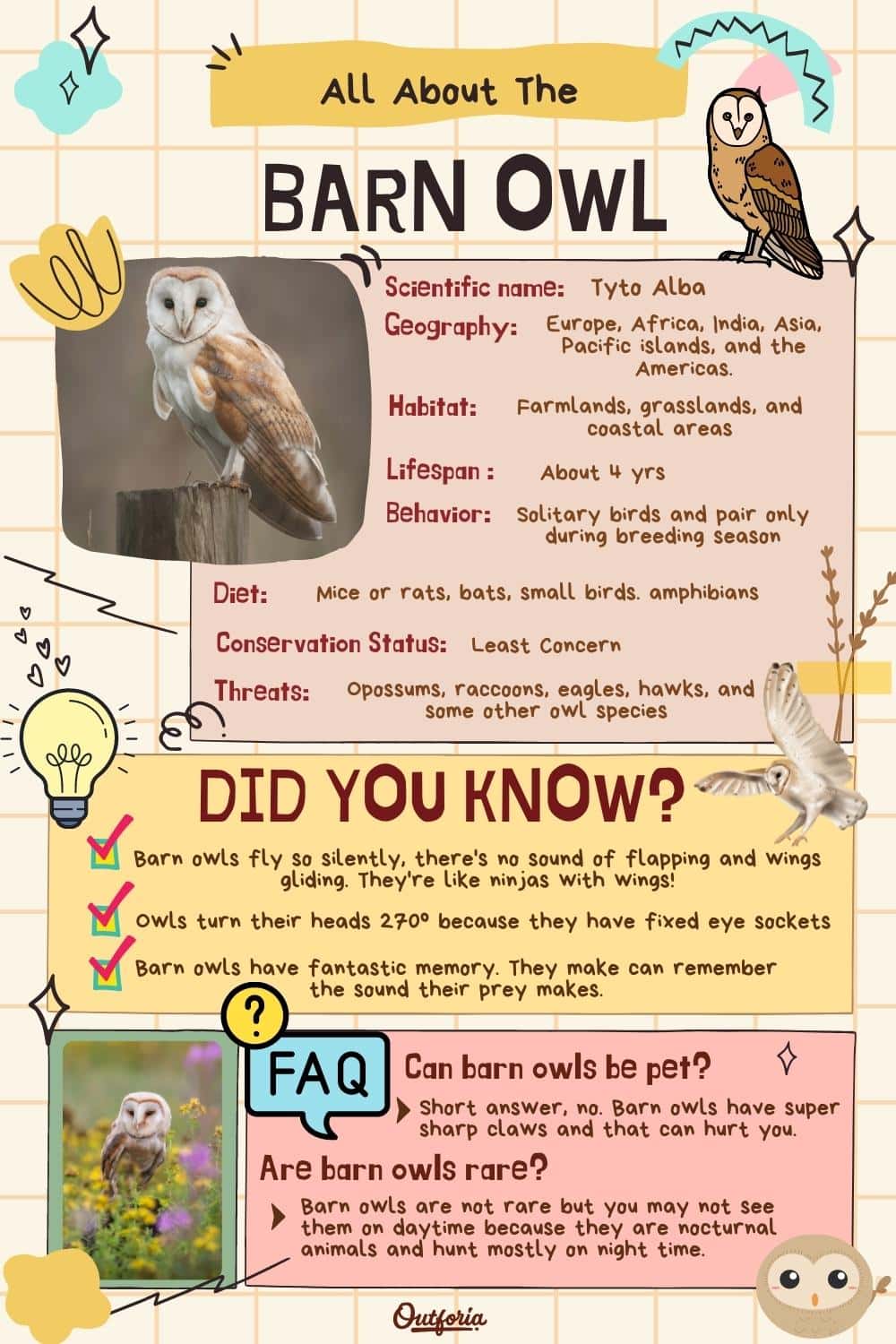
share this image on your site
<a href="https://outforia.com/barn-owl/"><img style="width:100%;" src="https://outforia.com/wp-content/uploads/2022/08/BARN-OWL-INFOGRAPHIC-683x1024.jpg"></a><br>barn owl <a href="https://outforia.com">Outforia</a>
Classification
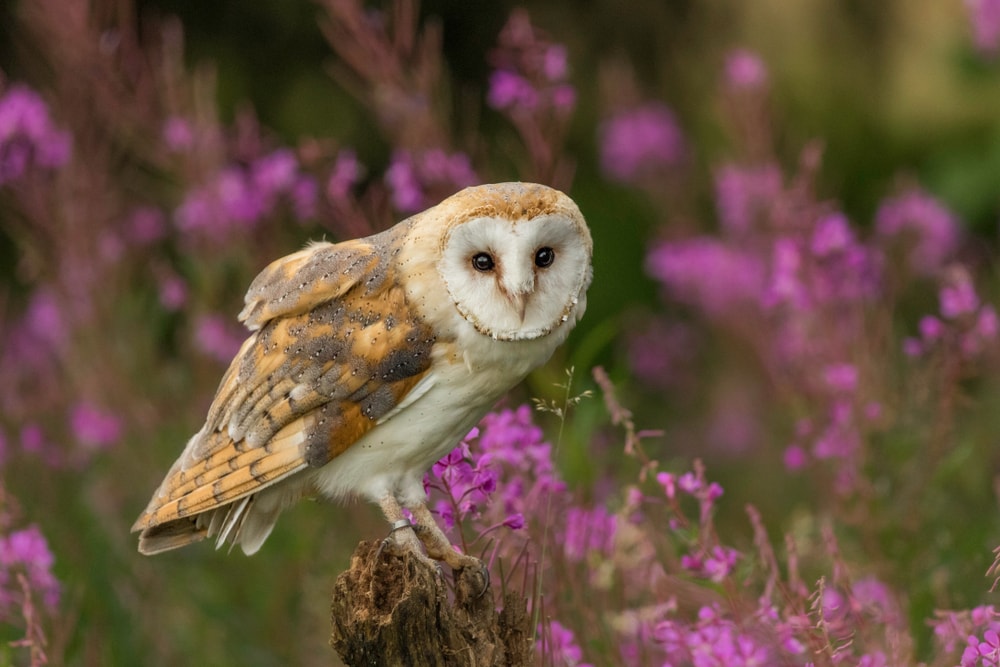
Often referred to as the common barn owl, this majestic bird of prey stands distinct from its Tytonidae family members.
Initially described in 1769 under the scientific name Strix alba, it was later reclassified as Tyto alba as more owls were identified. This name blends two Greek words: “tyto,” meaning night owl, and “alba,” signifying white, thus christening it the “white night owl.”
The barn owl’s striking appearance and haunting calls have inspired a myriad of imaginative nicknames, such as:
- Demon owl
- Ghost owl
- Death owl
- Lich owl
- Hissing owl
- Dobby owl
- Monkey-faced owl
Curiously enough, each of these monikers evokes a sense of awe and trepidation, hinting at the owl’s formidable presence.
Characteristics
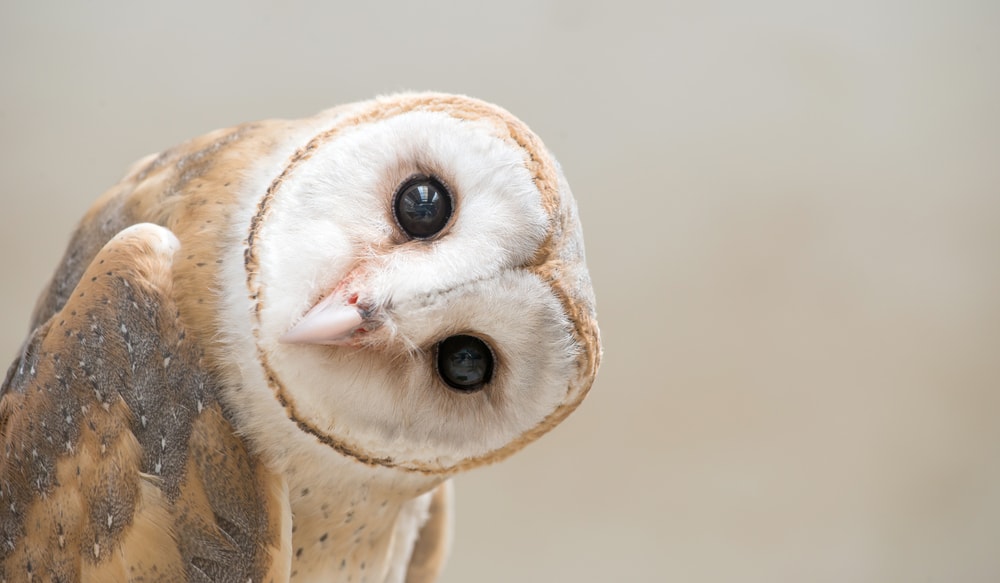
Barn owls boast a diverse lineage, primarily classified into three main groups:
- The Western Barn Owl: Native to Europe, Asia, and Africa
- The Eastern Barn Owl: Inhabiting Asia and Australasia
- The American Barn Owl: Found across the Americas
While some scientists propose five distinct species of barn owls, a remarkable 28 subspecies are known to exist.
Owing to the numerous subspecies, barn owl sizes exhibit considerable variation, typically measuring between 13 and 15 inches (33-39 cm) in length, with a wingspan of 31 to 37 inches (80-89 cm). These medium-sized owls are characterized by their relatively short wings and square-shaped tails.
Weight disparities are also evident among barn owls, with individuals ranging from 8 to 16 oz (250-480g). Intriguingly, island-dwelling owls tend to be smaller than their continental counterparts, possibly due to the need for increased agility to capture smaller insect prey.
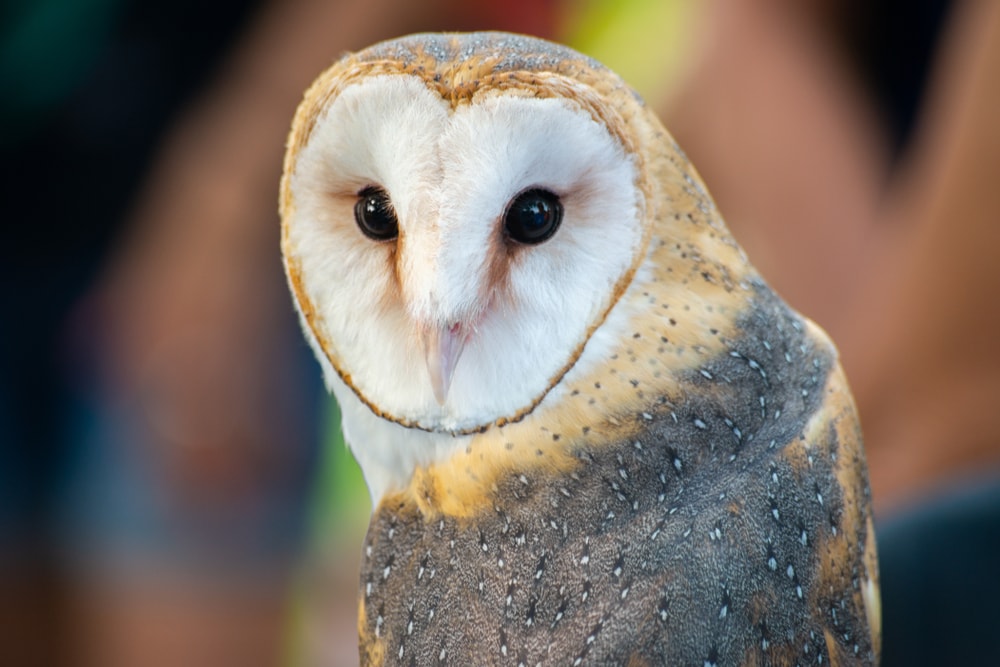
The barn owl’s appearance is truly distinctive, featuring a white, heart-shaped visage, large black eyes, and feathering above the beak akin to a nose. Furthermore, they possess elongated, feathered legs and exhibit a unique undulating flight pattern.
Their upper body coloration spans a spectrum from brown to gray, and while the face is predominantly white, some subspecies exhibit brown hues. Notably, barn owls lack ear tufts and possess sharp, brownish-black talons.
Sexual dimorphism is evident in barn owls, with males typically exhibiting paler coloration and fewer spots on their underbelly compared to females. Females are larger and heavier than their male counterparts; intriguingly, those with more abundant spots tend to attract more mates.
Geography and Distribution

Map made by Achim Raschka / CC BY-SA 3.0 / Wikimedia commons
With a presence spanning the globe, the barn owl holds the title of the most widespread land bird species. However, its habitat does not extend to Antarctica or the Sahara Desert. Its vast range encompasses Europe, Africa, India, Asia, Pacific islands, and the Americas.
In a notable 2008 event, barn owls were observed mating in New Zealand for the first time. Meanwhile, Hawaii intentionally introduced the barn owl to help control its burgeoning rodent population. Unfortunately, this plan had unintended consequences as the owls also began to prey on native birds.
Habitat
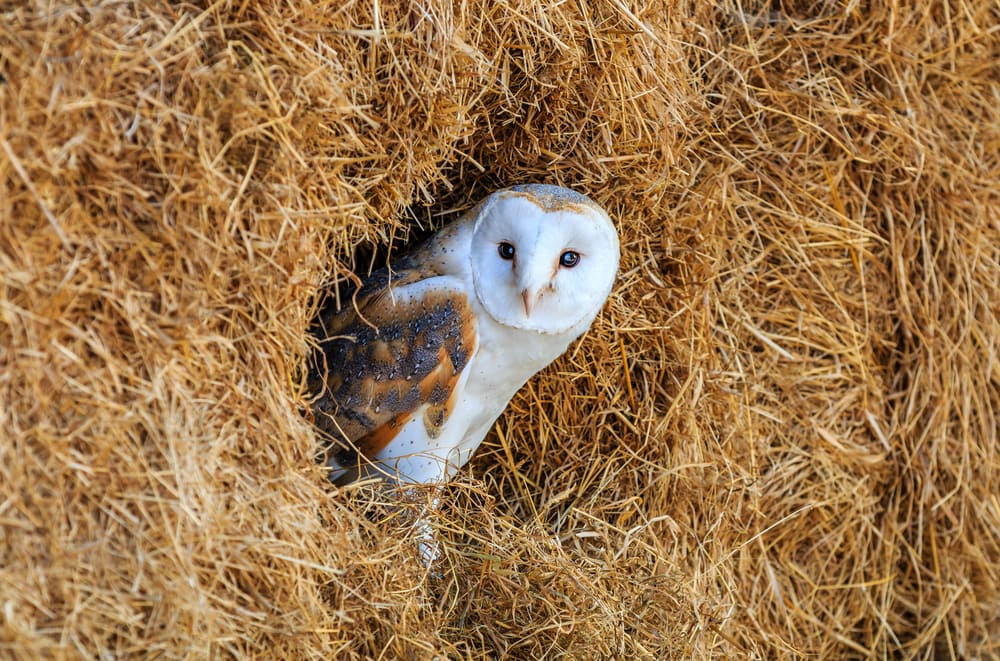
The barn owl’s global distribution enables it to thrive in a diverse array of habitats. It can frequently be found in farmlands, grasslands, and coastal areas. When hunting, these owls often patrol the edges of fields, riverbanks, and roadsides.
Barn owls also tend to nest in barns and abandoned buildings, allowing them to comfortably coexist with humans in urban and suburban settings.
How to Attract Barn Owls
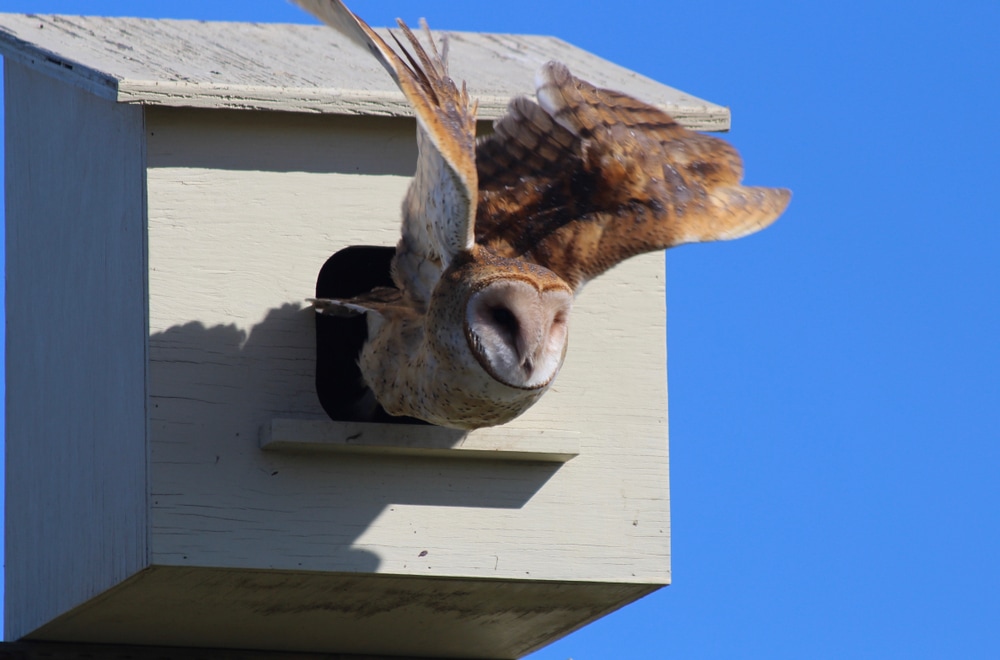
To allure barn owls to your area, you can create a hospitable environment that caters to their preferences. They are particularly drawn to farmlands and open fields, so if your property includes such landscapes, you have a higher chance of attracting them.
One of the most effective ways to entice barn owls is by setting up a nest box. You can affix this wooden shelter to a tree, pole, or barn.
Ideal nest box locations include shady trees; owls often hunt from such perches. The nest should be positioned at least 10 feet (3 m) above ground. Planting fir trees like redwoods can further enhance their preferred habitat.
Barn owls are also attracted to ryegrass, so incorporating various types of long grass can make your garden more appealing and wilder in appearance. Also, avoid using rodents and insect repellents, which can harm the owls.
When food supplies are limited in autumn and winter, you can set up a food table for them. Ensure it is high enough to be inaccessible to rodents and house pets.
Diet and Food Habits
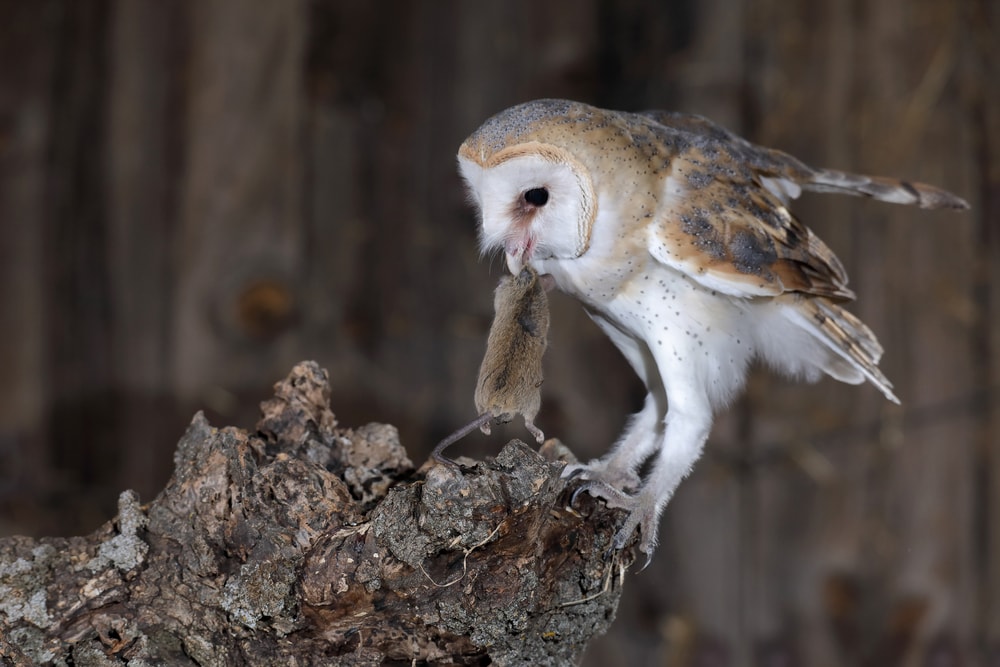
As raptors, barn owls primarily feast on mice and rats, although they occasionally indulge in bats, small birds, and amphibians.
Compared to other owl species, their higher metabolic rate necessitates a more substantial food intake. Despite their petite size, barn owls are voracious consumers of rodents.
Being predominantly nocturnal creatures, barn owls typically embark on hunting expeditions at night. Their disc-shaped faces are aerodynamically designed to channel sound efficiently toward their ear openings. These owls also possess asymmetrical ears, further enhancing their auditory prowess to precisely locate prey.
Equipped with long, slender legs, barn owls adeptly forage through dense foliage. Upon detecting their prey, they swiftly dive down and seize it with their sharp talons. In a final act, they swallow their catch whole and later regurgitate the indigestible components in the form of pellets.
Behavior
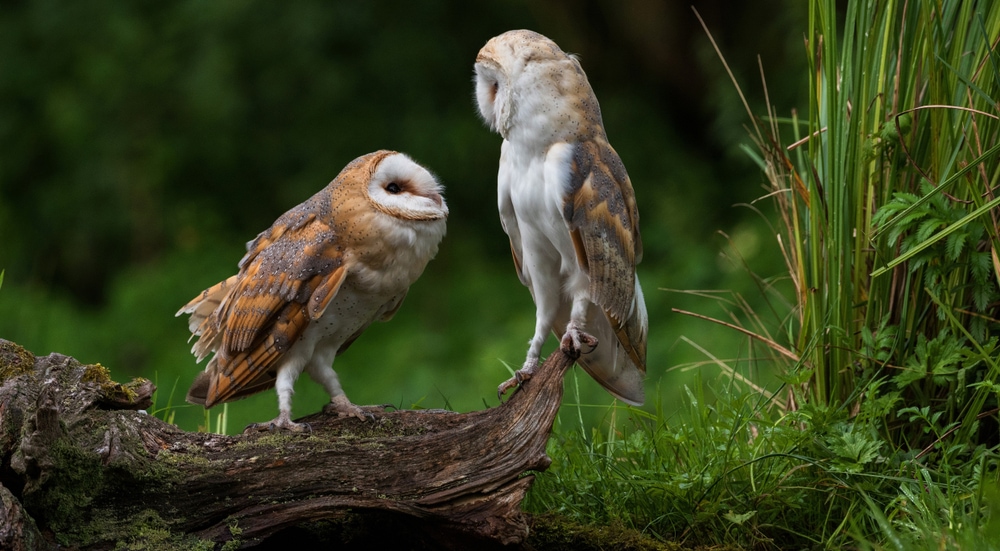
Barn owls are fascinating creatures that usually lead solitary lives. These enigmatic birds only pair up when it is time for breeding, and although they aren’t territorial, they do tend to forage close to their roosts.
Interestingly, a male barn owl’s home range is typically around 0.6 miles (1 km), and the female’s range usually overlaps with her mate’s. When they aren’t breeding, both birds roost in separate locations. They generally have about three different daytime hiding spots and rarely visit them at night.
When defending their nests, the male owl is often inquisitive and gentle, while the female is more aggressive and may even attack intruders. Surprisingly, their owlets are also quite bold and will readily pounce on various objects.
These captivating birds have two distinct defense poses. In one posture, they stand with their wings spread wide, and their heads lowered, swaying back and forth. In the other, they hold their wings downward and move their bodies from side to side.
During both poses, barn owls emit a hissing sound and may also create a snapping noise with their beaks and possibly their tongues. Males are known for their loud, 2-second screech, while females produce a more subdued purring call.
When returning to their nests, these owls emit a frog-like croak. To hear the unique screeching sounds of barn owls, you can listen here:
You may also like: 225 Types Of Owls: Pictures, Facts And More
Barn Owl Lifespan
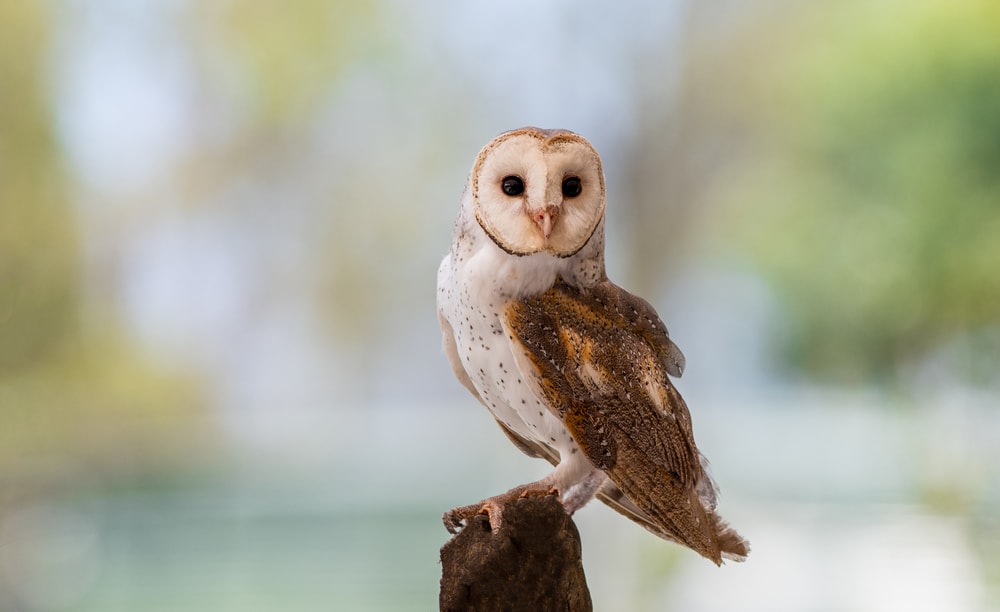
Barn owls, on average, have a lifespan of around four years in the wild. The record for the oldest wild barn owl is an impressive 15 years. However, these fascinating birds can live up to 20 years in captivity, provided they receive proper care.
Sadly, the survival rate for barn owl nestlings is quite low, with approximately 70% of them not making it past their first year. Despite these challenges, barn owls continue to thrive and remain a crucial part of our ecosystem, inspiring awe and admiration in those who have the opportunity to observe them.
Mating and Reproduction
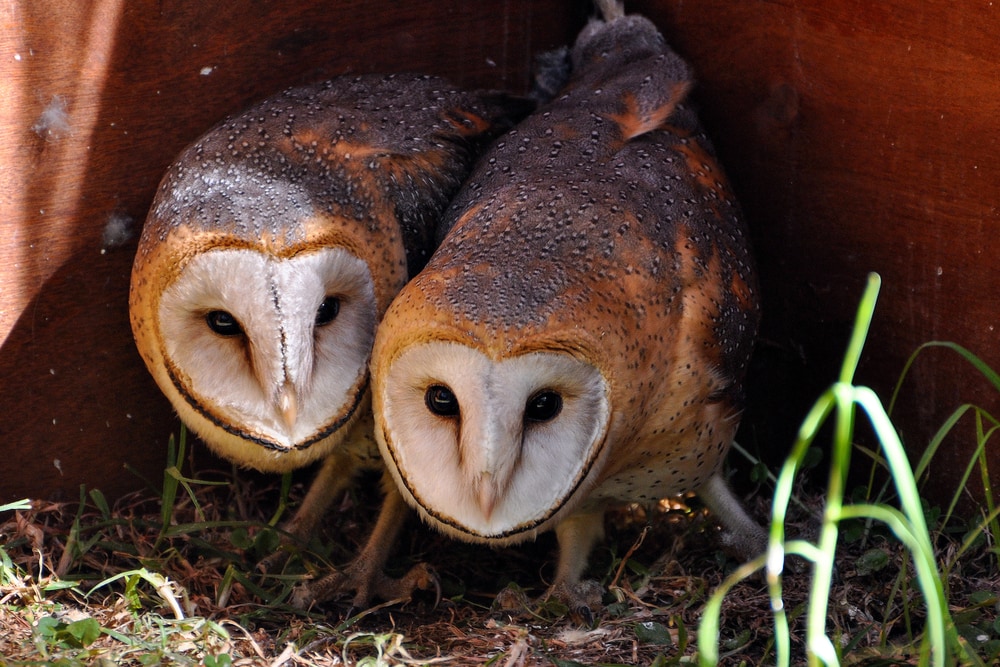
Barn owls mate for life. They only look for a partner when one of their mates gets killed.
Males start the courtship with a mid-flight display. Moth flying is a remarkable display of hoovering motion in front of the female. To impress the female, the male shows his chest and belly while flying.
They usually breed once every year. In warmer climates, they can reproduce thrice per year.
The female is ready to breed at about ten months of age. Owls are cavity nesters, so they prefer tree hollows or fissures in a cliff. In colder areas, they nest in buildings like sheds or church towers.
Before mating, the male slowly becomes the only hunter as the female generally stops. The female usually lays between four to six eggs on different days, spanning over 21 days. The incubation starts the moment an egg gets laid. Then, the eggs start hatching in approximately 31 days.
The male will continue to be the only hunter and bring food until the chicks are three weeks old. The owlets then begin to make short flights starting from seven weeks old. They learn to fly and hunt from 10 to 14 weeks old, but their parents still feed them.
At 14 weeks, owlets become adults and independent. They either fly away, or their parents kick them out.
Nesting
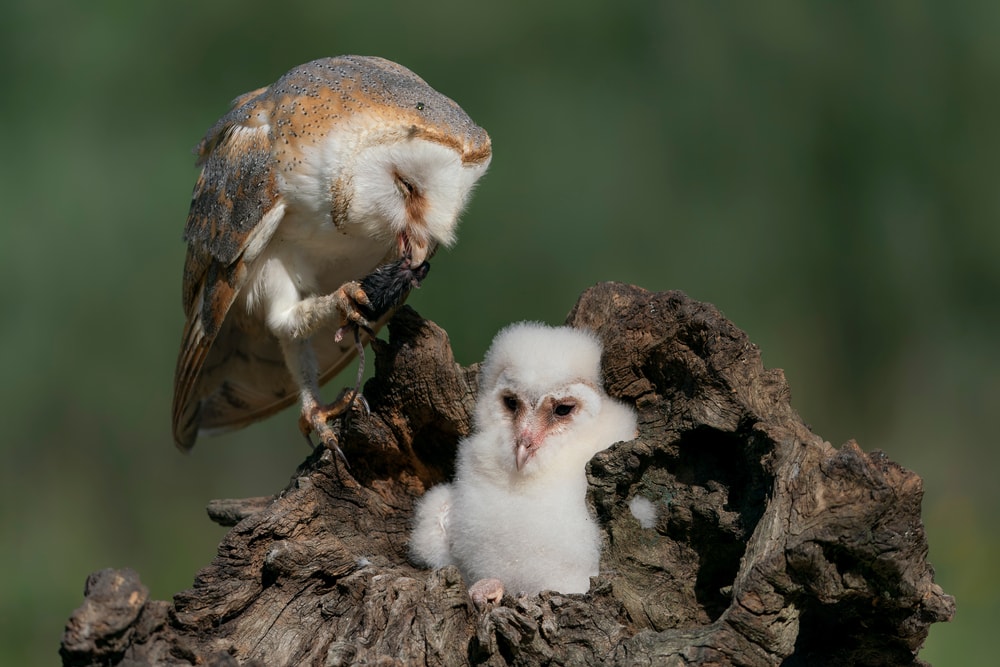
Barn owls have a unique approach to nesting, as they don’t construct nests in the traditional sense. Instead of gathering materials, they lay their eggs directly on the surface of their chosen site, which can be made of wood, stone, or even regurgitated pellets. This minimalist approach to nesting allows barn owls to focus on hunting and raising their young without the need for elaborate preparation.
Occasionally, barn owls may share their tree hollows or barn nests with other birds, such as jackdaws. This cohabitation exemplifies the adaptability and resourcefulness of these intriguing creatures within their natural environment.
You may also like: 40 Different Types of Birds Across The World: Photos + Facts
Migration
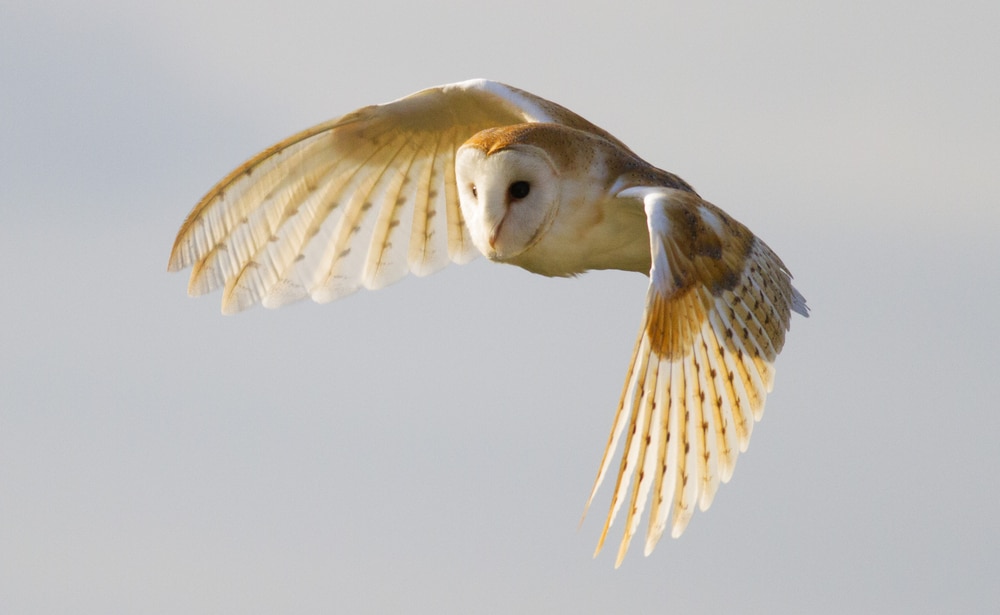
Barn owls are generally sedentary birds, often remaining in a chosen location even if more abundant food sources are nearby. They display a remarkable loyalty to their home territory, which serves as a testament to their adaptability and resilience.
However, in Australia, barn owls exhibit a different behavior. They migrate to the northern coast during the dry season and then return south when the wet season arrives. These seasonal movements are dictated by the availability of prey and favorable nesting conditions. Additionally, barn owls may migrate in response to rodent plagues, which provide an abundant food source and can influence their movements.
Despite their typical sedentary nature, barn owls have proven to be versatile and adaptive creatures, capable of adjusting their behavior to meet the demands of the ever-changing environment.
Population
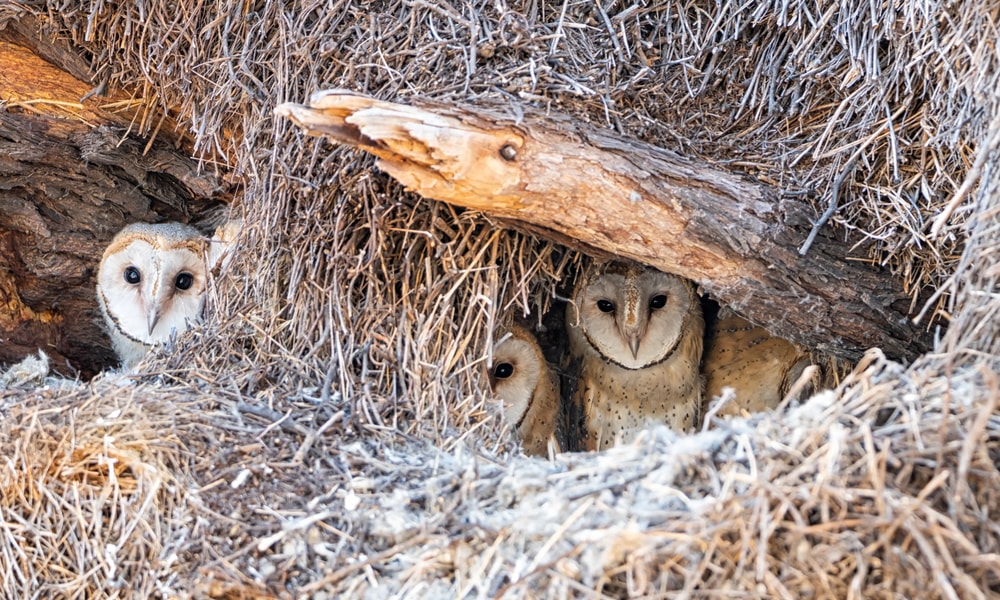
The International Union for Conservation of Nature (IUCN) estimates that there are more than 10 million barn owls globally, with over 2 million individuals residing in the Americas. This wide distribution makes the barn owl the second most widespread raptor in the world, surpassed only by the peregrine falcon.
You may also like: Nocturnal Animals List: What Stays Awake At Night?
Conservation Status
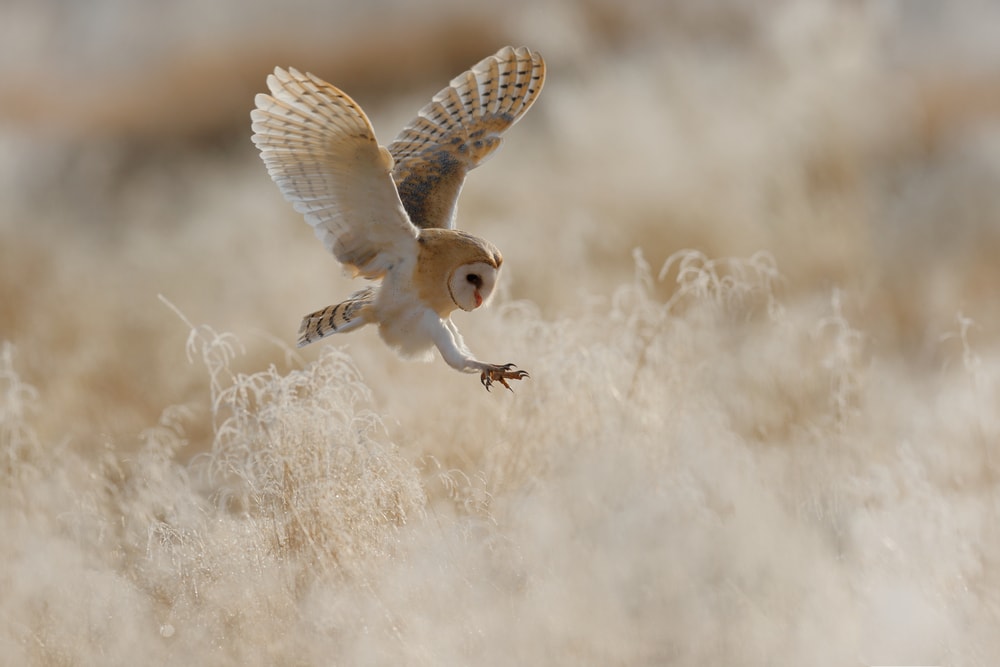
The International Union for Conservation of Nature (IUCN) has classified the barn owl as a species of “Least Concern” on their Red List since 2016. Despite facing numerous threats, such as habitat loss and exposure to pesticides, the barn owl’s population remains stable.
This classification speaks to the adaptability and resilience of these remarkable birds, who continue to thrive and contribute to the overall health of various ecosystems across the world. Nonetheless, it is essential to continue monitoring their population and prioritizing conservation efforts to ensure the long-term survival of this fascinating species.
Threats and Predators
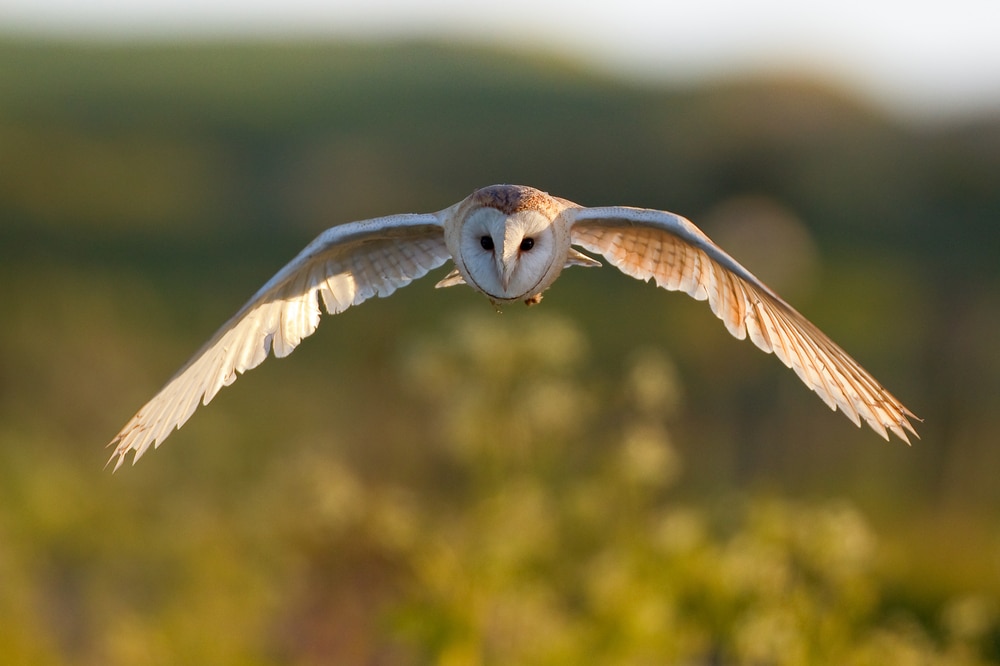
Barn owls face various predators in their natural environment, including opossums, raccoons, eagles, and hawks. Even other owl species, such as the great horned owl and Eurasian eagle-owl, are known to prey on them. Young owlets are particularly vulnerable and can fall victim to snakes and stoats.
Aside from predation, barn owls face challenges due to habitat loss, lack of nesting sites, and road fatalities. To help preserve this species, farmers and rural landowners are encouraged to maintain rough grassland areas, which provide an ideal habitat for mice and voles – the primary food source for barn owls.
Nest preservation is also crucial for barn owls, as they tend to spend most of their lives using the same roost once they have chosen an area. Whenever possible, existing nests should be maintained and protected. If this is not feasible, creating alternative nesting sites nearby can provide a valuable solution to support the long-term survival of these captivating birds.
You may also like: 10 Fascinating Desert Birds and Their Unique Adaptation
Ecological Role
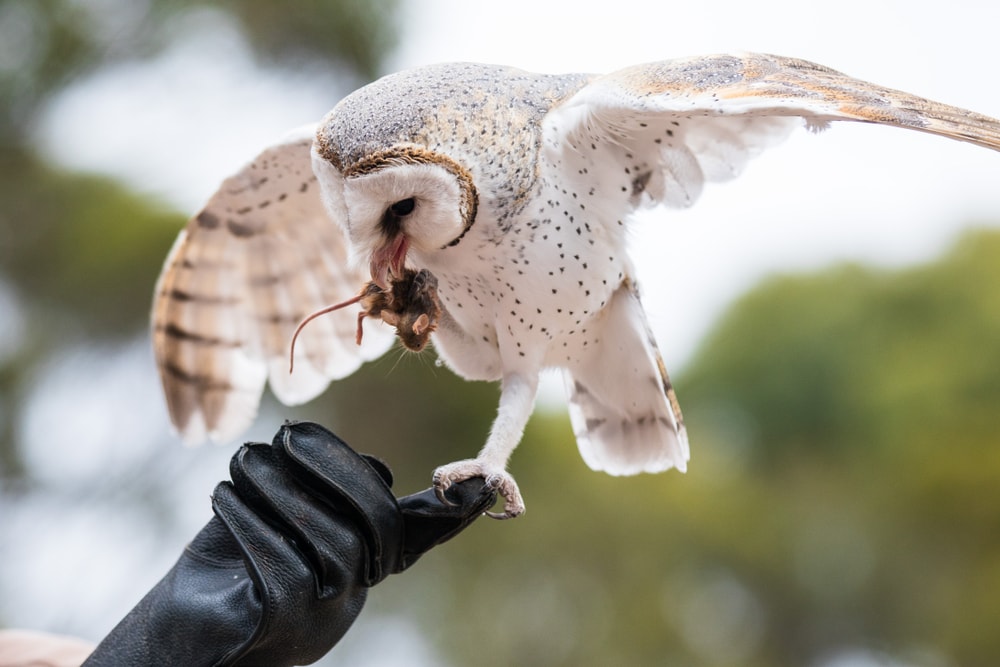
Barn owls, as birds of prey, occupy a vital position at the top of the food chain, playing a crucial role in maintaining the balance of their ecosystems. One of their most significant contributions is their natural ability to control rodent populations, which benefits farmers globally.
These skilled hunters help reduce yearly food losses caused by rodents, offering a more cost-effective and environmentally friendly solution compared to using poison or traps.
In some regions, such as certain Pacific islands, barn owls have been intentionally introduced as a means of rat control, demonstrating their value in pest management. Furthermore, barn owls also serve as a food source for other animals, contributing to the overall health and stability of their ecosystems.
Experiments on Barn Owls
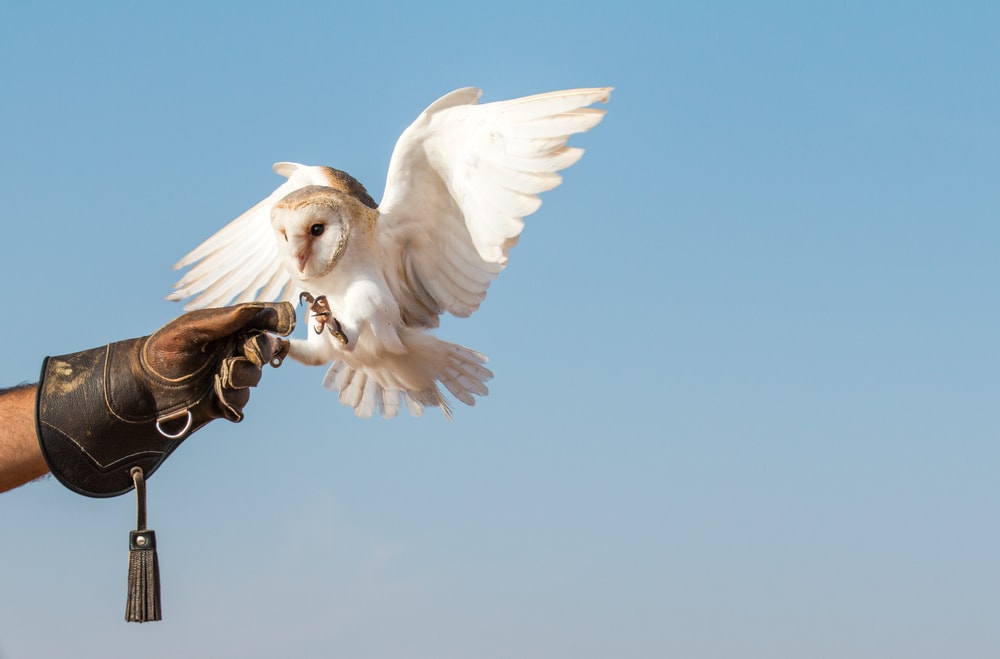
Researchers at Johns Hopkins University initiated a study on barn owls to gain insights into Attention Deficit Hyperactivity Disorder (ADHD) and the challenges people with this condition face when trying to focus. Barn owls were chosen for this study due to the unique organization of their midbrains, which could provide valuable information about attention processes.
However, this research has been met with criticism from organizations such as PETA, who express concern about the welfare of the barn owls involved in the experiments. The study involves conducting sensory tests by placing electrodes into the birds’ brains, and ultimately, the owls are euthanized.
As of 2022, Johns Hopkins University is still permitted to continue its experiments, despite the ongoing ethical debate surrounding the use of animals in research. The study highlights the complex nature of scientific inquiry and the need to balance the pursuit of knowledge with the ethical treatment of animals.
Fun Facts
Contrary to popular belief, owls, including barn owls, cannot rotate their heads a full 360°. However, they are still able to turn their heads an impressive 270°. This is because their eyes are fixed in their sockets, and they need to move their entire head to survey their surroundings.
Barn owls have been likened to “ninjas with wings” due to their incredibly silent flight. Their soft feathers, particularly on the edges of their wings, allow them to fly and glide without making any noise. This stealthy ability is crucial for hunting their prey effectively.
Additionally, barn owls possess remarkable memory skills, enabling them to recall the various sounds made by their prey. This helps them determine whether their target is eating, moving, or standing still, which enhances their hunting prowess.
Despite their incredible natural abilities, barn owls’ appearance has led to some cultural associations with fear or superstition. For example, in South Africa, they are often linked to witchcraft. This demonstrates how perceptions of these fascinating birds can vary significantly across different cultures and societies.
FAQ
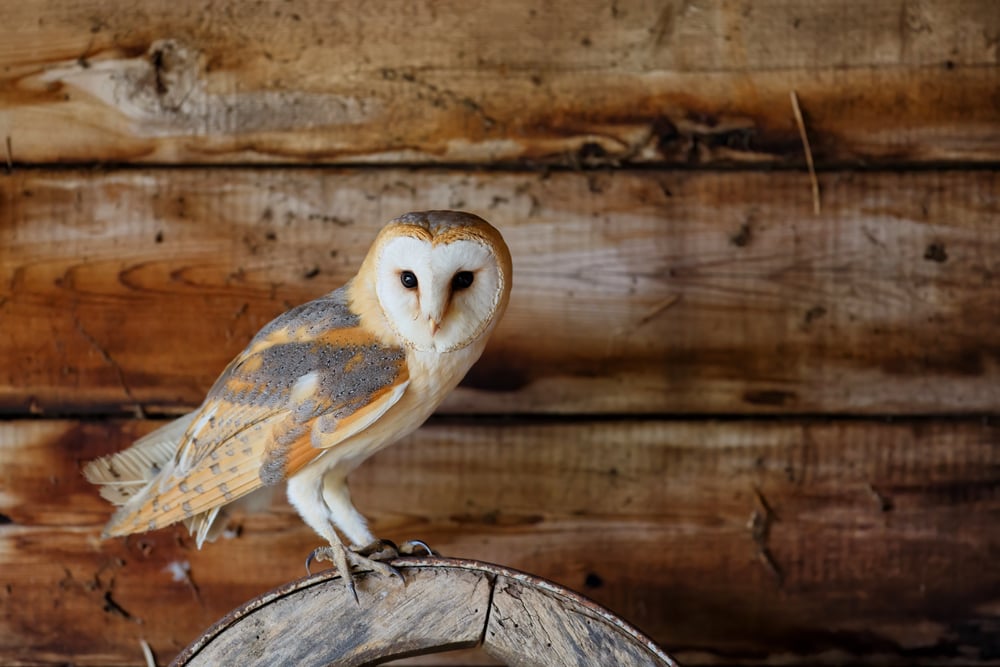
What is special about barn owls?
The barn owl’s physical appearance makes them different from true owls. They have a heart-shaped face that traps sound and directs it to their ears, giving them a keen sense of hearing.
Is it rare to see a barn owl?
Barn owls are not rare but difficult to see during the day. Since they are nocturnal, barn owls hunt at night.
Why do barn owls scream at night?
They usually scream at night when they catch their prey or feel threatened. Sometimes they screech when they mate.
What do barn owls sound like?
Barn owls make screeching, chittering, chirping, and tweeting sounds.
Can barn owls be pets?
Barn owls cannot be pets. Their feathers shouldn’t get stroked as they lose their natural waterproofing. They also have sharp claws, which can inflict pain.



